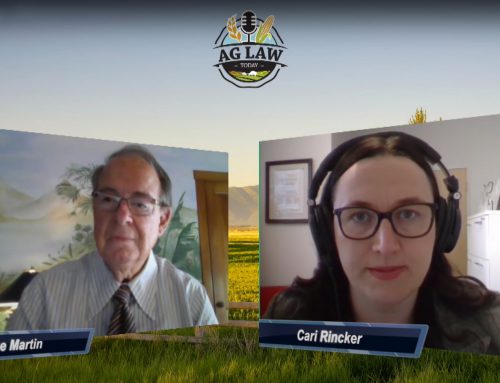On the Martin Law website, we offer a resource page to help clients when they are preparing for a case. One of the important processes we feature in this section is how to calculate plant loss. Our office represents farmers as the plaintiff’s lawyer, and often our claims are against large companies, like chemical companies. When our office is contacted by a client, there are specific steps we take to ensure we gather as much information and evidence as possible, and as quickly as possible. Our team will visit the site where the incident occurred, take photos, review laboratory reports and examine many pieces of information. We review the circumstantial evidence, which requires an inference to connect it to a conclusion of fact. We talk to eye witnesses, and we review direct evidence, which supports the truth directly. To help us calculate the loss, we created a guide for farmers to use. Providing as much detail as possible in a case is essential for success.
The Guide below outlines the steps to take when calculating plant loss. Farmers should keep this readily available as part of the farm management tools.
STEP 1 Inspect all plants you believe injured by whatever cause.
STEP 2 Videotape or photograph all of the injured plants by walking their perimeter so that
the magnitude of your injury can be ascertained. (Photographing a small space won’t
work; you have to document the entire area.)
STEP 3 If different varieties have been affected, check to see if there is any difference in
plant injury based upon varietal variance.
STEP 4 Regardless of the cause you suspect as being the culprit of plant injury, have plant
samples taken immediately and have a certified laboratory check for evidence of
the type of event you believe caused the harm.
STEP 5 Have your plants checked for evidence of other causes, such as insects or disease.
Check immediately with neighboring growers or, if not comfortable discussing injury to your plants, drive by neighboring growers and try to ascertain if others have similar injuries. (Weather events nor contaminated products isolate upon a particular grower. If you have a problem, somebody else may too.)
STEP 6 Call your local county agent and ask he or she to evaluate plant injury. Unless
damage is readily apparent, follow up promptly by having the nearest representative of IFAS come by your field to ascertain the problem.
STEP 7 Save all remaining fertilizers and chemicals in your possession and maintain
absolutely accurate spray records.
STEP 8 If plant samples are to be taken, remember to pull out the entire plant, if possible,
and make sure your scientist checks root systems as well as stems, leaves, and
flowers.
STEP 9 Ascertain number of plants affected by purchase records, inventory, or number of plants your available space can produce.
STEP 10 Save all reports by any agricultural inspectors relative to your husbandry practices or plant inventory, and save inventory provided by you for purchase of crop insurance.
STEP 11 Ascertain price you would have received for each plant based upon its size in relationship to the contract you would have received or market price at the time plants would have been available for market, but for the event which rendered
them unmarketable.
STEP 12 Notify your CPA or anyone else responsible for ascertaining the inventory of your
plants to segregate the injured plants so they may be compared to any unaffected plants of yours, or unaffected plants of someone else.
STEP 13 If your crop is insured, notify your agent immediately. If you believe there may be a
problem with chemical, fertilizer, soil, or liners, notify the producer of them immediately.
STEP 14 Ascertain whether or not you have changed your growing practices. If you haven’t,
this increases the likelihood of some outside event causing plant injury.
STEP 15 Be forewarned that your husbandry practices will be claimed by your opponents as
the cause.
STEP 16 In summary, have your field or nursery visited immediately by anyone who has the
scientific, financial, or legal expertise to aid you with the problem. The investigation
of plant injury and the ascertainment of the value of the plants injured is no different from any other investigation. The sooner knowledgeable persons show up, the better chance you have to have the problem solved.
STEP 17 As always, keep in mind the standard plant loss formula which is: The value of the
plants to be raised, less salvage, and less any costs you would have incurred in their
growing and marketing, but did not as a result of the injury.
STEP 18 Calculations based on destruction of citrus trees or plants which have continuing
value must be projected into the future. You will need help from a professional.


